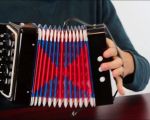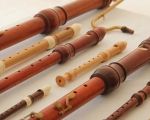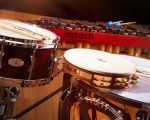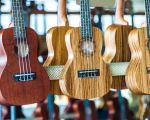Creative Ways to Make Musical Instruments for Preschoolers
1. The Importance of Music for Preschoolers
As a parent, I’ve always been curious about how music influences young minds. Music isn't just an art form for entertainment—it's an essential part of a child’s development, especially during their preschool years. Research has shown that music helps improve memory, emotional expression, and even fine motor skills. That's why I started incorporating music activities into my child's routine early on. One of the most fun ways to introduce music is by creating homemade instruments with my little one. It’s an engaging way to bond while also teaching them about sound and rhythm.
1.1 Why DIY Instruments Are Great for Preschoolers
Making musical instruments with preschoolers offers many benefits. First, it encourages creativity as kids get to decorate and personalize their instruments. Second, it provides an opportunity for learning through play, which is the most effective way to engage young children. Additionally, making instruments out of everyday household items is not only budget-friendly, but it’s also a wonderful lesson in resourcefulness. What I love most is that these homemade instruments can keep children entertained for hours, while also improving their cognitive and sensory skills.
2. Simple DIY Musical Instruments for Preschoolers
When it comes to crafting musical instruments for preschoolers, the key is simplicity. The instruments should be easy to make, fun to play with, and safe for children. Below, I’ll share some of the easiest and most enjoyable DIY musical instruments that I’ve created with my child. These instruments are perfect for introducing young children to the joys of music.
2.1 Shakers
Shakers are one of the easiest musical instruments to make, and they’re perfect for toddlers and preschoolers. You can use a variety of materials to create a shaker. For example, you can take a small plastic bottle or container and fill it with rice, beans, or pasta. Once it’s sealed tightly, the shaking motion creates sound. To make it even more fun, you and your child can decorate the bottle with markers, stickers, or colored paper. This project is perfect for introducing children to rhythm as they shake along with music.
2.2 Drum Set
Making a drum set from household items is another excellent way to introduce your child to the world of music. I simply took an empty cereal box, flipped it upside down, and placed it on the floor as a drum base. Then, I used wooden spoons as drumsticks. For smaller drums, you can use empty coffee cans or plastic containers. Let your child experiment with different objects to create their own sound. The best part is that the rhythm exercises can help develop motor skills while they play.
2.3 Xylophone
A xylophone is a fun way to teach children about pitch and melody. To make a simple xylophone, I used different sizes of rubber bands stretched over a cardboard box. By plucking the rubber bands, my child could hear different sounds depending on the tightness of the rubber band. The beauty of this instrument is that it not only makes a sound but also introduces basic concepts of music theory like high and low notes.
3. Tips for Teaching Preschoolers How to Play Music
Creating musical instruments is just the beginning. Once you have these homemade instruments ready, the next step is to teach your child how to use them. It’s important to keep the lessons fun, engaging, and interactive. I found that using simple songs or clapping games helps kids stay focused and interested. Here are a few tips that have worked for me when teaching my child how to play music:
3.1 Keep the Sessions Short and Sweet
Young children have short attention spans, so it’s important to keep music sessions brief. I usually aim for around 15-20 minutes of music time, which is enough to keep my child engaged without overwhelming them. I focus on one instrument at a time, encouraging my child to explore and experiment with sounds. By doing so, they stay curious and enthusiastic about learning more.
3.2 Introduce Basic Rhythms and Patterns
One of the first things I introduced to my child was basic rhythms. We started with simple clapping patterns and then progressed to using the homemade instruments to mimic the rhythm. I found that using songs with repetitive patterns helped my child understand rhythm better. It also gave them an opportunity to develop their sense of timing and coordination.
3.3 Create a Musical Story
Music and storytelling go hand-in-hand, so I created a fun musical story that incorporated our homemade instruments. For example, we made the shakers sound like the rustling of leaves and the drum like thunder. This allowed my child to use their imagination while learning about music. Incorporating storytelling into music lessons is a fantastic way to keep children engaged while also teaching them about the creative process.
4. Where to Find Materials for DIY Instruments
Finding materials to create these musical instruments doesn’t require a trip to the craft store. I’ve discovered that many household items can be transformed into music-making tools. For instance, you can use cereal boxes, pasta, and rubber bands from around the house. However, if you’re looking for something specific or want to add more variety to your instruments, local craft stores and online marketplaces like Amazon are great places to find materials. Just be sure that all the materials you use are safe for children to handle.
4.1 Recycled Materials
Recycled materials are not only eco-friendly but also budget-friendly. I’ve found that old cardboard tubes, empty cereal boxes, and even bottle caps can be used to create unique instruments. Reusing items around the house is a great way to involve your child in the creative process and teach them about sustainability.
4.2 Craft Store Supplies
If you’re looking for more polished materials, craft stores offer a variety of supplies perfect for creating instruments. Wooden dowels, colorful paint, and even small bells can be used to enhance your musical creations. Craft stores also offer kits that contain everything you need to make your own xylophone, drum, or maracas.
5. Why DIY Musical Instruments Are Worth It
Making musical instruments with preschoolers has been a rewarding experience for me, both as a parent and as a teacher. It’s an affordable and enjoyable way to introduce children to music and creativity. Through these DIY projects, my child has not only learned about sound and rhythm but also developed their fine motor skills and creativity. It’s a bonding activity that we both look forward to, and it’s something that will help my child’s development in the long term.
5.1 Fostering Creativity and Imagination
Creating and playing with musical instruments fosters a child’s imagination and creativity. It allows them to explore different sounds and textures, which helps them develop a deeper appreciation for music. Watching my child experiment with their instruments and make up their own songs has been one of the most fulfilling parts of this process.








